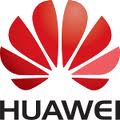 Summary: Transport network is evolving with growing data demand from users. For an operator, to meet the demand is of prime concern. To meet demand, network capacity needs to be augmented. Which technology should an Opco choose to upgrade capacity? Would SDN make in-roads in transport network sooner or later? NGPT looked at all these important aspects in recent edition of NGPT-2014. Here’s the review.
Summary: Transport network is evolving with growing data demand from users. For an operator, to meet the demand is of prime concern. To meet demand, network capacity needs to be augmented. Which technology should an Opco choose to upgrade capacity? Would SDN make in-roads in transport network sooner or later? NGPT looked at all these important aspects in recent edition of NGPT-2014. Here’s the review.
Mumbai edition of daylong conference on ‘Next Gen Packet Transport Network’ recently concluded at Four Seasons. It was last in series after Delhi edition at Leela Palace, Gurgaon. The packet transport or rather transport network seems to be rather upbeat with arrival of some interesting technologies which might change the complete course of ‘Telecom Network’ itself.
Huawei India, the principal sponsor of the event, was represented by Mr. Chandan Kumar, who talked about ‘Various Generations of Packet Transport Network and arrival of 5th Generation’. The talk was mainly focused on SDN (Software Defined Network Controller) and Huawei’s position in SDN market overall. The interesting aspect is that, although Huawei, which contends the transport space with the likes of Cisco and Ciena, the increasing focus of the company might be serious challenge to established players in the segment. Prior to Huawei, Mr. Jajal Choudhri, RCom talked about operator landscape and presented existing scenarios in transport network.
Interesting discussion started with ‘operator-vendor mix’ panel discussion later. Mr. Deepak Saxena (Idea Cellular), Mr. Bharat Goel (Tata) and Mr. Arumugham (RJio) represented the operators, while Mr. Sandesha (Cisco), Mr. Ramakrishna (Global Cloud Exchange) and Mr. Abhijit (Coriant) represented vendor community.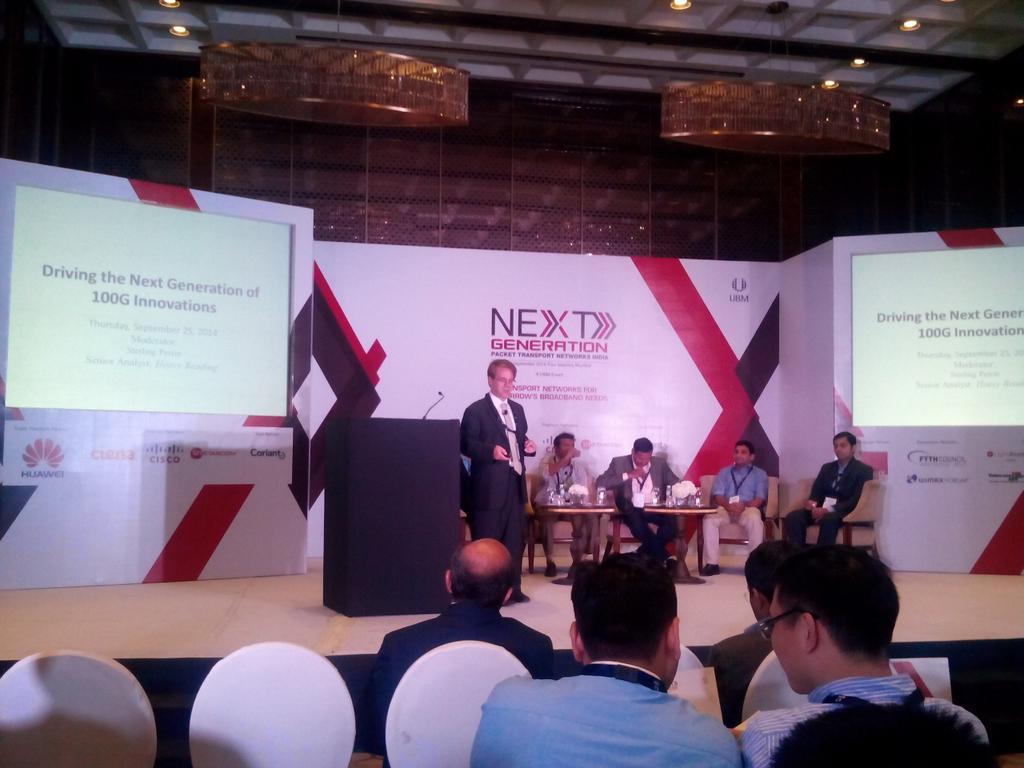
Idea Cellular, the third largest telecom player by market share, had various expectations from vendor community including helping them on migration from 10G to 100G, with choice between coherent and noncoherent optical transport. There was interesting discussion on IoT /Alien Wavelength/Regulatory challenges between various vendor equipment, where audience were keen to take up the things straight with vendors. Pricing of 100G was concern for Idea, but Tata Tele had other opinion on same, where operator panel seems to be in rather disagreement. Cisco team represented by Mr. Sandesha talked about ‘Advance DSP’ features of Cisco for Next Generation capacity evolution, whereas Global Cloud’s Mr. Ramakrishna highlighted the ‘Trends in Sub-Sea Transport Network’. Ciena’s Mr. Abhijit focused on ‘Evolution of Packet Transport Network Generations’.
Ciena’s interesting keynote by Mr. Ewald Schrap on ‘Weathering Data Deluge’ had some interesting points to ponder. Mr. Ewald talked about how operators can make use of SDN’s interesting dimension to make money or get better RoIs. The idea was to deploy SDN Controller to build analytic ability on the top of existing ‘Big Data’ (which telcos have) to create interesting proposition. According to Mr. Schrap, SDN Controller has the ability to hide the complexities at L1 Transport media, helping Opco to focus on Control and Application layers to create various offers for their clients.
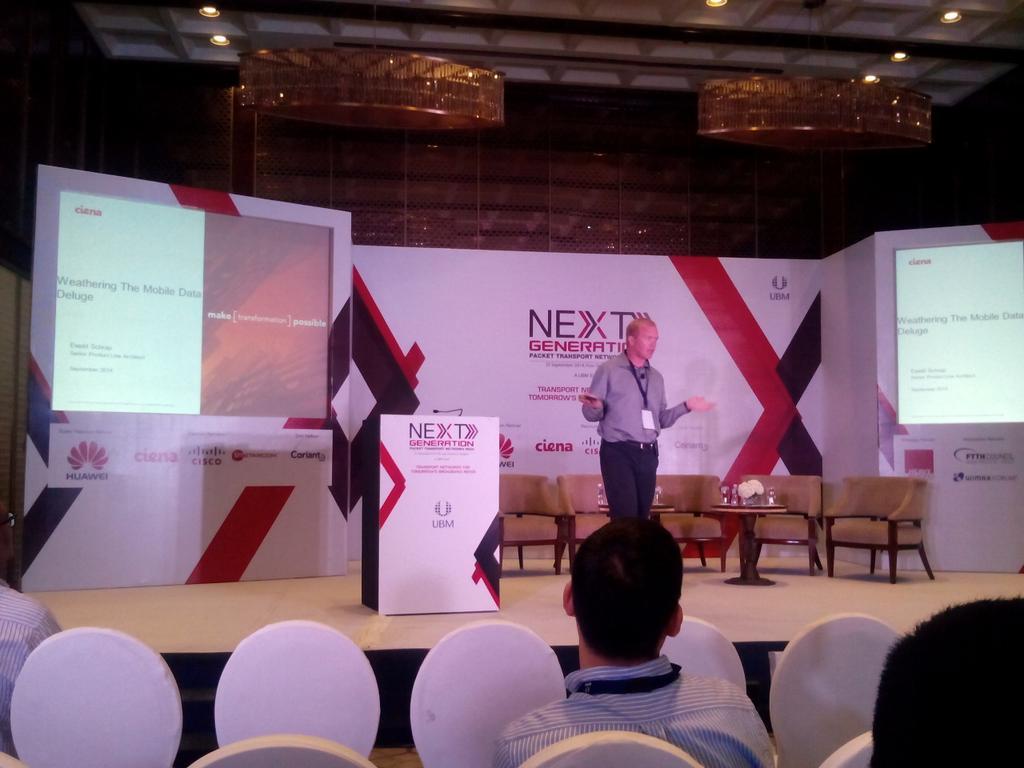
Another highlight of event was keynote by Mr. Uday Joshi, Vodafone on ‘Transport Backhaul- Same Old New Frontier’. The multi-facet talk rather focused on need to evolve backhaul technologies along with backbone network. Mr. Joshi, who was of opinion that backhaul network (between BTS/Node B to BSC/RNCs) needs more focus for two good reasons. First, the amount of traffic carried by backhaul has gone up exponentially (which earlier backbone network used to carry) and existing backhaul network topologies mightn’t be able to sustain the data uptake. Mr. Xu from UTStarcom, another vendor and market leader in SDN Controller segment, discussed about ‘Profitability with SDN Controllers’, which attracted quite a bit of attention from audience.
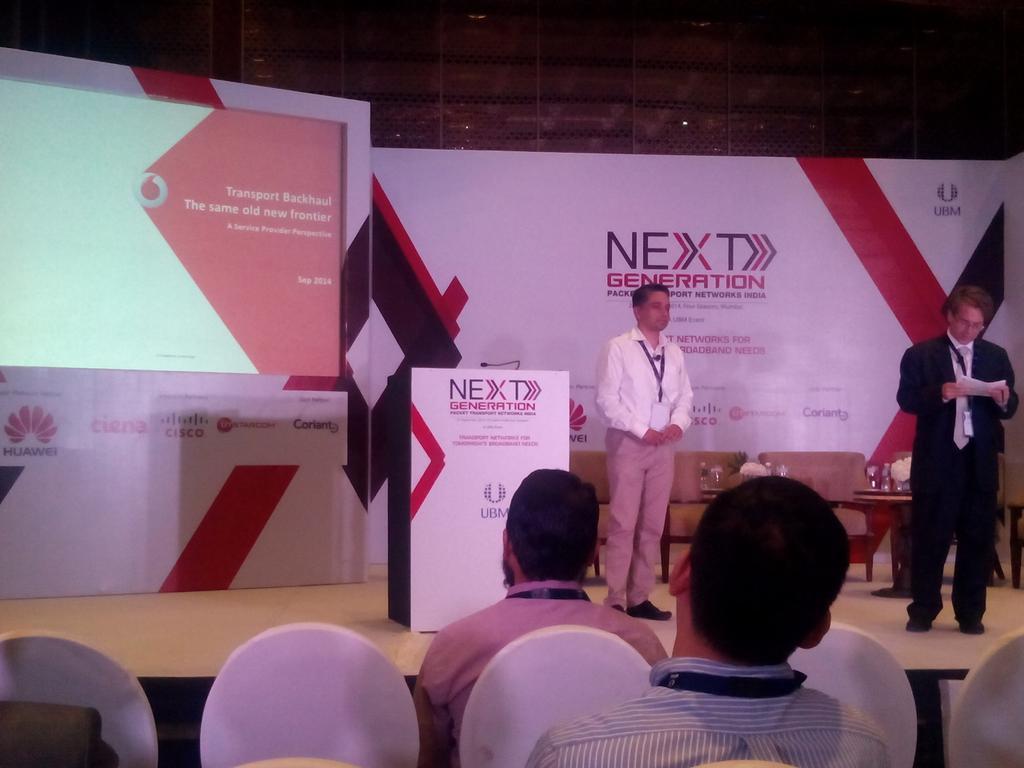
Post lunch session and panel discussion were focused on how ‘Carrier SDN’ can help in creation of new services and new revenue streams for operators. Mr. Robert Shore, Director Coriant, had an interesting proposition for SDN naysayers. The analogy of iPhone Vs Blackberry with SDN Controller Vs Existing L2/L3 switch network highlighted the very need of creation of new services, interactions and revenue streams for operators. The session ended with the discussion on ‘Next Edge Metro Edge and backhaul networks’.
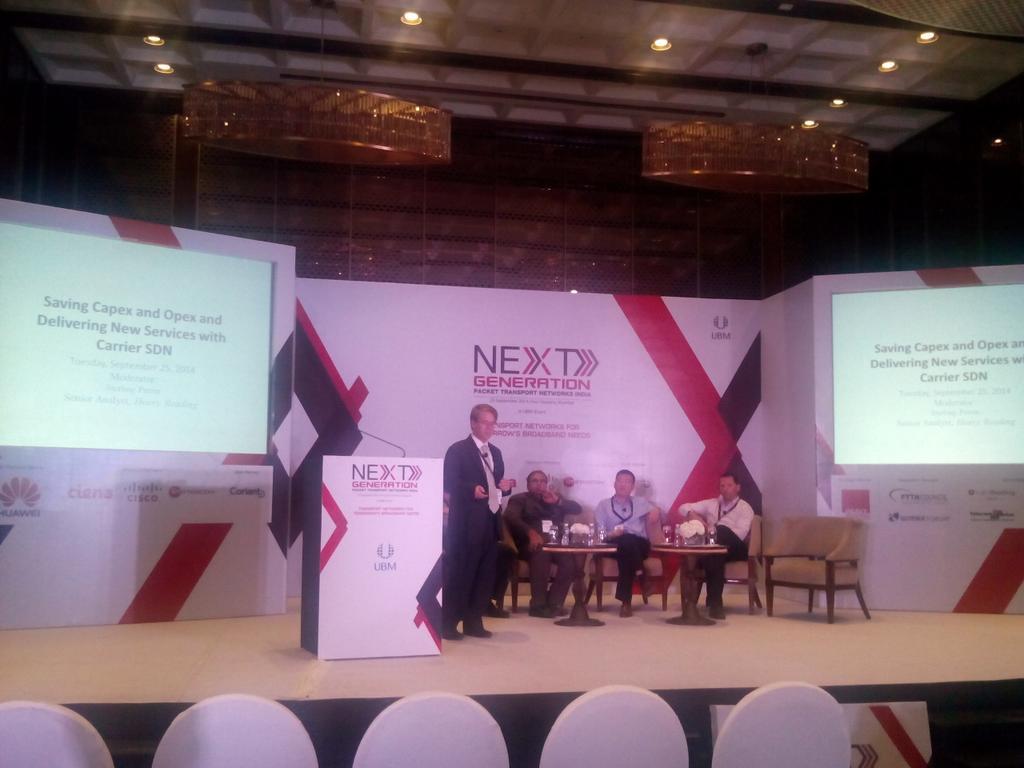
Overall NGPT Mumbai was quite good show. The overwhelming response from telecom fraternity was an indication that, transport network, which always considered as secondary to RAN (Radio Network) in terms of focus for an operator, needs much serious attention in ‘Data Edge’ and can’t be just deployed as it is. Interestingly there are two main take away from the conference, which I would look forward to see, which would also define the future trends in packet transport.
First one is about ‘SDN’, where existing vendor community is pushing/moving, while Indian Telcos are still looking it at as far-away need. The prime concern for deployment or need of any SDN based network depends on multiple parameters from an operator perspective. While a typical Indian operator is rather more price conscious, the investment made into existing transport network components needs to be justified before jumping on to SDN. Moreover the migration of existing packet network topology to SDN Controller based network has to have its own merits, and need of SDN based ecosystem would see, how operators in India take it from here. I do see that it’s been long way for an SDN Controller based packet network evolution in India, whereas such need is right now only being created (or appears to be created) by vendor community.
Another takeaway is focus on the evolution of network from 10G to 40G to 100G and beyond, especially in transport context (backhaul + backbone). This would rather be a topic of immediate interest for an operator, as data demand is outpacing data capacity provisioning. While it appears that there’s no single path to migrate from existing packet network capacity, the choice of right path to move to higher capacity would depend on Cost and IoT. Vendors including Cisco, Ciena, Coriant, Huawei and UTStarcom have long way to go from here and enough time-frame to strategize on Indian transport network market. Fundamentally it’s now clear that industry has moved or rather willing to from existing Microwave based transport to more robust, resilient, high capacity transport media, keeping cost and migration path intact for an operator. And it’s right time to take a shot of all options for an operator.
(Note: Telecomblogs Media is online media partner for the event with LightReading and UBM. The Twitter live feed was also available for viewers to visit)




